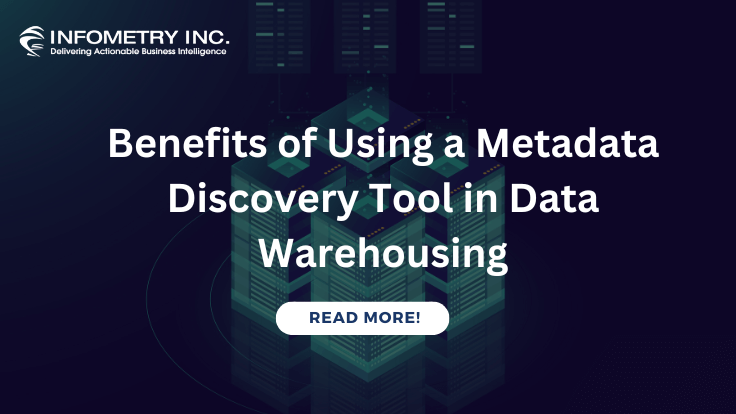
A Detailed Beginner’s Guide to Power BI
January 3, 2024
Snowflake: Paving the Future of Cloud Data Warehouse and Analytics with Infometry
January 31, 2024In the fast-paced world of data analytics and business intelligence, Power BI has emerged as a powerhouse, revolutionizing the way organizations derive insights from their data. While many users are familiar with its core capabilities, several lesser-known features and aspects can significantly enhance your Power BI experience. In this blog post, we’ll delve into the top unknown facts about Power BI, shedding light on its hidden gems that can transform the way you analyze and visualize data.
Power BI’s Roots and Evolution
Before we explore the lesser-known features, let’s take a brief journey into Power BI’s origins. Power BI was first introduced by Microsoft in 2013 as a collection of business analytics tools to provide interactive visualizations and business intelligence capabilities. Over the years, it has evolved into a comprehensive platform, offering a suite of tools for data preparation, analysis, and sharing insights.
The Power of DAX (Data Analysis Expressions)
While many users know Power BI’s ability to create compelling visualisations, not everyone fully grasps the power of Data Analysis Expressions (DAX). DAX is a powerful formula language used in Power BI to create custom calculations and aggregations of data. Understanding and leveraging DAX functions can take your analytical capabilities to the next level, allowing you to perform complex calculations and manipulate data with precision.
Advanced-Data Modelling Features
Power BI’s data modelling capabilities extend beyond basic relationships and hierarchies. Users can define and use row-level security to restrict data access based on user roles. Additionally, the platform supports advanced modelling features like calculated tables and calculated columns, enabling users to create dynamic and sophisticated data models.
Integration with Infometry for Seamless Data Management
One of the lesser-known but highly impactful aspects of Power BI is its integration with data management solutions from Infometry. Infometry plays a crucial role in enhancing data quality, managing metadata, and ensuring seamless data integration within the Power BI environment. This integration empowers organizations to streamline their data workflows, from extraction to visualization, ensuring a more efficient and reliable business intelligence process.
Q&A Natural Language Processing
Power BI’s Q&A (Question and Answer) feature harnesses the power of natural language processing to allow users to query their data using everyday language. This often-overlooked feature can be a game-changer for users who prefer a conversational approach to data exploration. By typing questions in a natural language format, users can quickly generate visualizations and gain insights without delving into the intricacies of data modelling.
Power BI Mobile App for On-the-Go Insights
Many users are unaware of the robust mobile capabilities that Power BI offers. The Power BI mobile app allows you to access your reports and dashboards from anywhere, ensuring that you stay connected with your data even when you’re on the move. The app provides a seamless and responsive experience, enabling users to make data-driven decisions on the go.
Custom Visualizations and AppSource Integration
While Power BI comes with a rich set of built-in visualizations, users can further enhance their reporting capabilities by exploring custom visualizations available on Microsoft AppSource. This marketplace for Power BI visuals offers a wide range of third-party visualizations that can add unique and specialized features to your reports. Integrating these visuals can provide a fresh perspective on your data and cater to specific business needs.
AI-powered Insights with Power BI Insights
Power BI offers AI capabilities that can automatically generate insights from your data. The Power BI Insights feature uses machine learning algorithms to analyze your data and identify trends, anomalies, and potential areas for further exploration. By incorporating AI-driven insights into your reports, you can uncover hidden patterns and gain a deeper understanding of your business metrics.
Power BI Paginated Reports for Pixel-Perfect Printing
For users who require highly formatted and printable reports, Power BI Paginated Reports offer a solution. Unlike traditional Power BI reports, which are designed for interactive exploration, paginated reports are optimized for printing and sharing. This feature is particularly useful for organizations that need pixel-perfect, print-ready reports for regulatory compliance or executive presentations.
Collaboration and Sharing Features
Power BI isn’t just a tool for individual analysis—it’s a collaborative platform that facilitates sharing and collaboration. Users can share their reports and dashboards with colleagues, clients, or stakeholders, and even embed them in websites or applications. The ability to create and share a Power BI app allows you to package a collection of dashboards and reports for easy distribution within your organization.
Conclusion
In conclusion, Power BI is a multifaceted tool with numerous hidden features that can transform the way you analyze and visualize data. From advanced data modelling to integration with solutions from Infometry, Power BI offers a comprehensive suite of tools for organizations seeking to derive actionable insights from their data. By exploring these lesser-known facts and features, users can unlock the full potential of Power BI and elevate their data-driven decision-making processes to new heights.




